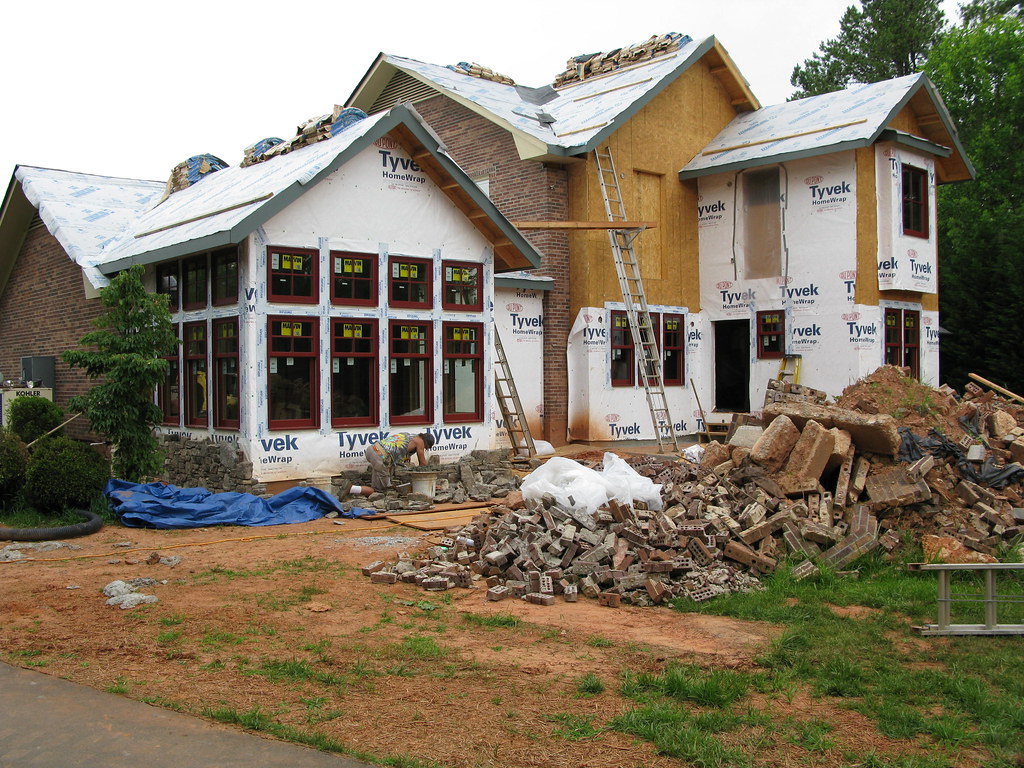When most people think of roofs, they typically think of shingles or metal roofing. But what some may not know is there’s another layer of protection directly on top of the roof deck and under the roof covering that performs a critical role in protecting your home from moisture damage. It’s called roofing underlayment Synthetic vs. Felt Roofing Underlayment is explained in this post.
Find out more about this critical component of your roof’s structure.
What Is Roofing Underlayment?
Roofing underlayment is what lies between the shingles and the roof sheathing, or roof deck, which is typically either plywood or OSB. It’s installed directly on the roof deck and provides a secondary layer of protection from the elements, including rain, snow, and wind.
Types of Roofing Underlayment
There are two main types of roofing underlayment:
- Felt
- Synthetic
Each product has its pros and cons, and the type you choose may depend on your geographical area, roofing materials used, roof design, budget, and what your roofing contractor may suggest.
Felt Roofing Underlayment
Felt roofing underlayment is one of the oldest types of roofing underlayment. It’s created by saturating paper or fiberglass mats with asphalt.
Felt roofing underlayment is typically available in two types: No.15 felt and No. 30 felt. Compared to No. 15 felt, No. 30 felt is typically thicker, stronger, and may be less prone to tearing or ripping off during installation or weather events.
The Good
The main advantage of using felt roofing underlayment is cost. Felt underlayment tends to cost less compared to synthetic underlayment, which is why it’s often the go-to for budget-conscious homeowners.
The Bad
There are several disadvantages to using felt underlayment on a roof. One disadvantage of traditional felt roofing underlayment is it generally can’t be left exposed for more than a few hours. The material may dry out or leach oils in the heat. This would impact the felt’s ability to protect against moisture.
Other drawbacks of felt underlayment include:
- Prone to tearing in high winds and during the strain of installation.
- If exposed to moisture, the mat can absorb water and wrinkle the felt, making it harder for the shingles to lay flat. Therefore, shingles should be installed immediately after felt roofing underlayment is installed if possible to ensure optimal protection.
- Felt underlayment also weighs more, which can make it harder for roofing contractors to drag rolls of it up a ladder and onto a roof.
- It also has a slippery surface, which can sometimes make it more difficult to install.
- The weight also leads to less material per roll. This means more potential seams instead of a single course with no laps.
Felt Roofing Underlayment and Warranties
If felt underlayment is installed it may also prevent you from being protected under the manufacturer’s warranty, which may require synthetic underlayment.
Synthetic Roofing Underlayment
For enhanced water resistance and protection from the elements, many roofers are choosing to go the route of synthetic roofing underlayment. These products are usually made from long-lasting polymers, which provide added strength and longevity. This type of underlayment is typically moisture-resistant, and when it’s installed correctly, it offers better protection from the weather compared to felt.
Synthetic roofing underlayment materials are not standardized, so different manufacturers may make their products differently, and therefore may have different levels of performance. Be sure to do your research and talk with a trusted contractor who can help guide you in selecting the right roofing materials to protect your home.
The Good
There are four main advantages to installing synthetic roof underlayment rather than felt. Compared to felt, synthetic roofing underlayment is:
- Tough
- Fast to install
- Safe
- Repels water
The Bad
Many synthetics are competitively priced, but when compared to felt, the main drawback of synthetic roofing underlayment is the cost. The upfront investment in higher quality roofing materials, however, could save you money down the road. You can’t put a price on the peace of mind knowing that your roof is sufficiently protected from moisture.
The Right Underlayment for Your Roof
Find out which underlayment is right for you! Next Wave Roofing is the name to trust! Call us today at (720) 443-5386 or schedule a FREE estimate. We serve clients in Denver, CO, and the surrounding areas.





